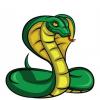Oblique nibs
-
Forum Statistics
354.5k
Total Topics4.6m
Total Posts -
Member Statistics
127,512
Total Members2,585
Most OnlineNewest Member
MAISTEER ERICH
Joined -
Images
-
Albums
-
4posts
- By Tashi_Tsering,
- 0
- 0
- 48
-
Misfit’s 6th Album
- By Misfit,
- 86
-
One-Off Post Attachments 2
- By LizEF,
- 0
- 105
- 85
-
namrehsnoom-16
- By namrehsnoom,
- 0
- 0
- 68
-
Photo for my Posts 2
- By AceNinja,
- 0
- 0
- 19
-















.thumb.jpg.f07fa8de82f3c2bce9737ae64fbca314.jpg)



.thumb.jpg.331e554113c33fb39d5bf3233878978a.jpg)





Recommended Posts
Create an account or sign in to comment
You need to be a member in order to leave a comment
Create an account
Sign up for a new account in our community. It's easy!
Register a new accountSign in
Already have an account? Sign in here.
Sign In Now